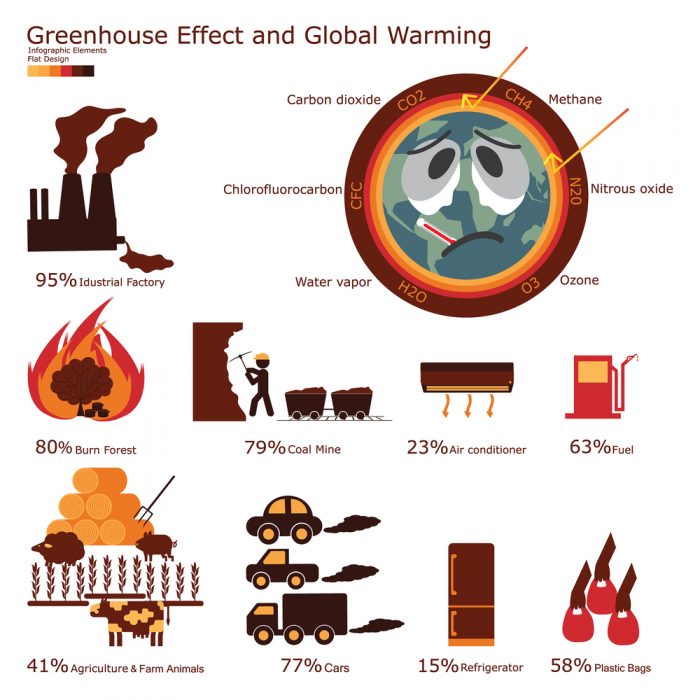
Writing your research paper introduction should be viewed as an opportunity to start your essay from a place of strength. A good introduction will strike a balance between engaging the reader and providing pivotal background information. In this opening paragraph it is important to mention relevant aspects of a topic and the exact research question your paper examines.
Too many writers treat the research paper introduction as mere inconsequential filler before discussing the really valuable facts and findings of the research.
This mentality couldn’t be further from the truth.
A well-written research paper introduction is like the bow of the ship, cutting into water.
It needs to forge a clear path for the rest of the boat through the forces of water.
The same goes for your paper: your introduction needs to forge a clear path for the rest of your argument/findings through the hazy forces of your thoughts.
When executed well, it gives the reader a taste of the direction the paper will go in.
This introduction also helps to engage the reader, seizing their full attention.
It also establishes trust with the reader, as you assert the importance of the subject you are covering.
A good research paper introduction is also captivating and thus promises the reader that the rest of the paper will be captivating.
The best research paper introductions are easy to follow and give a general map of what is to come.
Writing a good introduction to a research paper requires that you establish a careful balance between the background of the subject and the direction you plan to transition the paper towards.
Taking the time to really understand the nuances connected to a solid research paper introduction can help empower you to write an excellent one.

Your research paper introduction is the key to your paper
Your research paper introduction is the paragraph (or in some cases, one to two pages for long papers) that acquaints the reader with your topic.
This introduction plays a crucial role and very specific functions.
It needs to capture the reader’s interest, state the topic and provide the specific angle that you will be using to examine this topic.
The beginning of the research paper introduction needs to offer background in the subject in an engaging manner.
Subsequent sentences need to walk the reader through the journey that the paper will take them on.
Once the reader has finished the introduction, they should have a general idea of what they’re going to read about.
This is so important, as it ensures the reader will stay on the proverbial “same page” as the writer.
A research paper introduction also demonstrates the precise perspective of the author on this topic.
This way, the reader understands the direction and goals of the writer, and what they are attempting to achieve.
Many research paper introductions are structured via what is referred to as the “reverse triangle.”
The first sentence addresses address the topic in a more general manner, and then subsequent sentences zero in on the precise aspects of this topic.
Ultimately the goal of the introduction is to arrive at your precise perspective on this topic.
The last sentence (or “point” of the triangle) will state your specific research question or angle.
Make any changes and adjustments if necessary.
You can also view our full research paper example to see the introduction in action.
With each passing generation, the pressures and challenges placed on youth seem to increase. The Internet has contributed to this situation. While the Internet has created a tremendous amount of opportunity, wealth and connection, it has also caused much pain. Leaked photos, invasions of privacy, cyber attacks, and comparable incidents have made the Internet a treacherous environment. One of the most frustrating aspects of cyber attacks is that they often occur anonymously: via unknown hackers or fake profiles. This can create a breeding ground for the cowardly and the vindictive. When it comes to adolescents, the treachery of the internet is intensified, as parents need to both protect them and empower them from the lurking dangers. Some of those dangers are monstrous, like online pedophiles, and others are misguided anger and growing pains that manifests peer to peer. Cyberbullying represents the newest challenges placed on the youths of this generation. Thankfully, it’s a phenomenon that parents don’t have to cross their fingers about and hope kids figure it out. This paper will examine what parents and children can do to prevent cyberbullying.
When many people hear the phrase “the American dream” many picture a house in 1950s suburbia with a stay-at-home mom and a breadwinning dad. Others picture running their own business and being their own boss. The American dream has always represented different things to different people. This fact underscores the very diversity that makes up this nation. Buying a house and earning more than one’s parents was at one time the American dream. However, with each passing generation, the American dream shifts a little bit as a result of progress, the development of technology and the evolution of society. This paper takes a long look at how the current thread of the American dream today has evolved, particularly under the modern influences of social media and the 24-hour news cycle. Specifically, it examines how the thunderous forces of the internet and the media have influenced the current shape of the American dream and the future direction this dream will likely evolve towards.
Global warming is one of the most hot button issues of the day, with many scientists fervently debating what some argue to be simple facts. The reason that global warming is such a contentious issue revolves around the interpretation of scientific data. While some scientists argue that there is copious scientific evidence that shows human beings are causing the planet to become consistently warmer over time, others disagree. These dissenting scientists argue that there is no compelling scientific evidence that the human discharge of carbon dioxide will cause disastrous warming of the Earth’s atmosphere. Hence, what some experts assert is a situation of increased warming over time, others argue is simply a manifestation of a common pattern of the earth. Opponents to climate change have long argued that the earth has warmed and cooled over periods, as part of its natural interaction with the larger universe. Based on these dissenting views, this paper will examine: which position on global warming has the most scientific research to support it?

Abortion has long been one of the most divisive subjects that can inspire some of the most embittered debates. Those who support abortion see it as a constitutional right, and one directly connected to the inherent right of women over their own bodies. Those in favor of abortion view the fetus as lacking personhood, and hence having no rights. They view anti-abortion law as the attempt of the state to exert control over female body, something they consider totalitarian. Those who oppose abortion see it quite simply as murder. Furthermore, these opponents view abortion against the constitutional right to life that the fetus has. Opponents even go so far as to argue that the fetus can experience pain. While no one might know if the fetus experiences pain or has rights to human life, what one can determine is if abortion has a net negative or net positive effect on humanity. This paper will take a look at two specific English societies: one in New York City, where abortion is legal, and the other in Dublin, Ireland, where abortion is illegal except when being used to safe a woman’s life. This paper will seek to determine: how does a legal versus illegal abortion-centered society impact the health, happiness and overall career success of the women in that society?
Human beings have long been drawn to objects, places, and people of beauty for as long as humans have existed. Beauty in individuals has been viewed as a sign of health, an inspiration for great art, and a source of fascination. With beauty there has also been competition and comparison, as people try to understand, analyze and celebrate beauty.
P.T. Barnum is often credited as creating the first beauty contest in the mid 19th century, but public dissent closed it down, provocatively enough. Nowadays, the beauty pageant still exists, but it too has gone through numerous changes and transformations, opening it up to much discussion. Beauty pageants for children have developed as well. This has naturally caused much controversy. Some argue that it teaches children the valuable lesson of winning, losing, poise, presentation, and public speaking. Opponents argue that it reduces the self-worth of children to their outward appearance, something that will cripple their innate sense of self. This paper seeks to examine the after-effects of children who compete in beauty contests by examining the decades following their lives into adulthood after the contests. Ultimately this paper asks the question, what impact do child-level beauty pageants have on the participants’ ability to forge a healthy and balanced adulthood?
America has been famously and repeatedly hailed as a nation of immigrants. This is more than just charming branding of the nation. From a factual and historical perspective, nation was founded by and built by immigrants from all over Europe. Without immigrants, many people have argued, there would be no United States. Yet, in modern times, immigration has spun into a highly charged and complex subject. Immigrants continue to add value and controversy to America and American politics. Even more controversial are the ‘dreamers” the children of adults who immigrated here illegally. These children are innocent: their parents are the ones who broke the law. Many of these young people have assimilated completely to American society and have more connection to this country than the one people argue they should be deported back to.
Even so, determining the most just method of dealing with them causes tremendous controversy and embittered debates. This paper will examine the benefits and drawbacks of allowing dreamers to stay in the United States as citizens, using hard data to support each position. Ultimately, this paper asks the question: what is the gross impact of dreamers on American society?

As much as America likes to consider itself to be a freethinking, independent and flexible society, there are many aspects of American society that are quite rigid and myopic. One aspect of the nation’s rigidity manifests in the American educational system. So much pressure is put on high school students to get into a good college. Moreover, there is a very concrete expectation that teenagers will begin college immediately after they finish high school. Many child and young adult pedagogical experts consider this to be ludicrous. This tradition denies teenagers the freedom to develop at their own pace and to gravitate to genuine interests at their own speed. For example, Americans generally consider themselves to be freer and less structured than their British counterparts. However, in Britain, it’s typical for teenagers to take a gap year between their high school and collegiate study. This gap year gives young people a chance to take a breath, travel, volunteer and refocus their interests. This way when they do go to college, they are able to apply themselves academically to more organic areas of interest. This is largely because their gap year has given them that insight and clarity. This paper will examine the concrete drawbacks that are connected to pushing teenagers to begin college immediately after high school. Specifically, this paper will explore what the concrete benefits of a gap year are and how they manifest in student success.
The divorce rate in America is the highest it’s been in decades. Many sociologists believe this is in part responsible for why people are getting married later and later in life, or not at all. Much has been discussed about the impact of divorce on children. Some experts in child therapy have argued that children are happier, healthier and do better in school when they have two parents in the home. This trend states that even if the married couple is miserable and fighting, the couple being and staying married creates better outcomes for children. The other school of thought on this issue believes that peaceful homes create the best outcomes for children. Experts who believe in this philosophy assert that it is better for parents to divorce than for children to grow up in homes filled with fighting and vitriolic tempers. This paper seeks to achieve clarity between these two viewpoints by examining the health, happiness and success outcomes from children of two sets of homes: homes riddled with miserably married parents, or homes where the parents have divorced. Is it better for the success and development of children to have parents who are unhappily married or who are happily divorced?
Our writers have a tremendous amount of experience with research topics of nearly every variety.
Some of these topics are exceedingly common; others are so obscure, only a few people on the planet are familiar with them.
We know how important it is to nail that research paper introduction. The research paper introduction essentially sets the tone for the entirety of the paper.
If it’s not perfect, often the entire paper is imbalanced or not clearly focused.
We can help provide a guide or template to the best research paper introduction for your subject.
Often times we can also create an entire outline or sample paper to be used for your own educational purposes.
Many of clients use these samples to check their own writing against.
This helps them see that they are writing smoothly, with strong arguments and transitioning deftly from one point to the next.
Our writers are often able to provide meaningful feedback on the strength of a research question or topic.
We love to collaborate and get feedback from our clients so that we can shape a piece of writing to perfection together.
Likewise, we can provide editing services for already written research papers or introductions.
Services like these can take an average paper up to the next level of excellence.
Working with a writer specifically assigned to your topic can make you feel less alone during the challenging process of writing a research paper.
Rather than being a process of frustration and tedium, putting together a strong research paper introduction can be illuminated with learning and insight.
Place an order now with our example research paper writing service and get 10% OFF your First order
The research paper introduction can make or break your entire paper. A strong one creates a solid path for the rest of your paper. The reader knows what your question is, and how you’re going to argue it. A weak research paper introduction only creates murkiness and imbalance: your question or topic is unclear. Often the entire paper will suffer from this lack of clarity. Similarly, sometimes a weak research paper introduction is just clear but painfully dull. Research papers take extraordinary time and effort. At the very least they should be interesting to read. If not, they’re just an exercise in drudgery. Reaching a level of mastery when it comes to crafting the best research paper introduction will seep into all your other writing projects. This will help in giving you confidence and clarity regarding the best ways to start all essays.

Comments